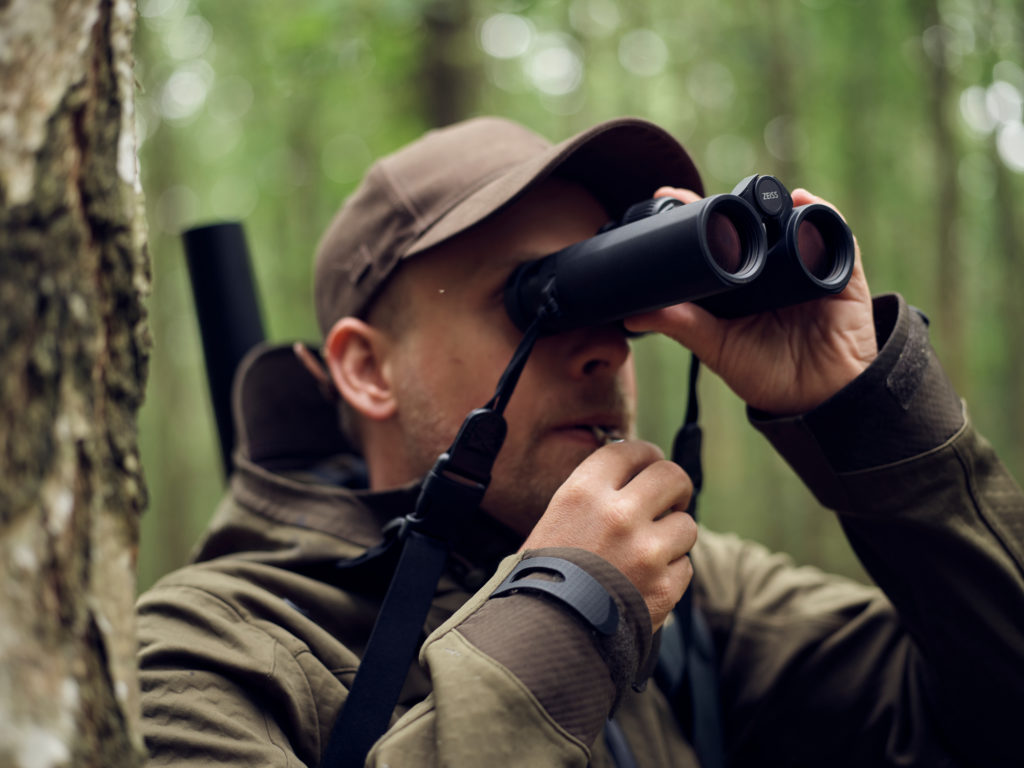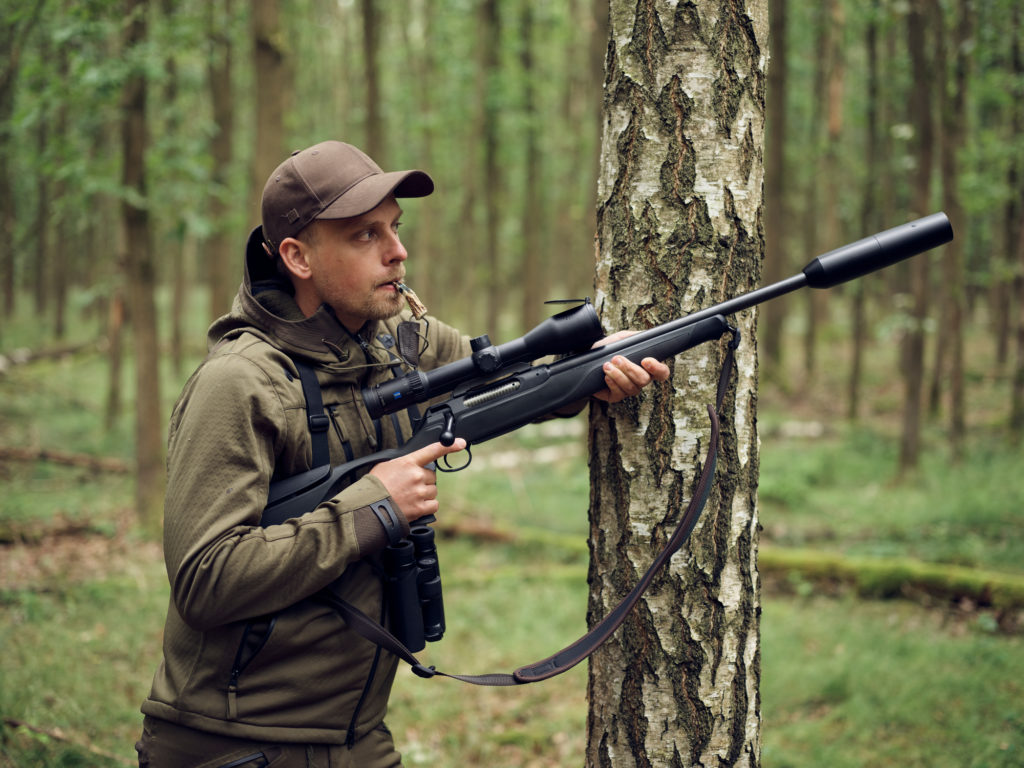The most important info on the supreme discipline of hunting.
Hunting during the rutting season often evokes two things in most hunters: questions and curiosity. If you’ve read up on the subject in relevant books, you’ll quickly come to the conclusion that there are many different opinions, but no universal answer.
What is the so called “Blattzeit”?
Deer hunting during rutting season has an individual term in Germany. The local hunters call this time of hunting seasons the “Blattzeit” – based on the specific sounds they produce during the hunt.
By definition, “Blattzeit” is a term derived from hunter lingo that describes the decoy hunting of bucks during the deer’s mating season. This decoy hunting is colloquially referred to as “blattening”. Using this technique, the hunter imitates the sounds of a female deer willing to mate by using a sophisticated whistling technique. By perfecting the sounds, bucks willing to mate are specifically attracted. The “Blattzeit” usually begins in mid-July and lasts until mid-August. The “prime time” of blattening does not begin until the end of July – by then most deer have already mated. But some bucks, which were yet unable to attract a rutting female, will follow their instincts in hope for their “last chance” to mate.
The rutting ritual – successful through knowledge
Only those who understand the rutting ritual between buck and doe can hunt successfully. Normally, the ritual always follows a similar pattern. Once the buck has discovered a doe, the so-called drive begins. There, the mating act does not occur. The doe is pursued by the buck and in this hormone-controlled phase forms the follicle for the later act. This phase often lasts several days.
Especially the driving phase (or the phase before it) is perfect to attract bucks willing to mate. The actual rut usually lasts between three and four days.

The different sounds
The real supreme discipline of decoy hunting is the correct whistling technique. Once learned, you can imitate several different rutting sounds. Basically, you can limit yourself to five different acoustic stimuli to imitate female deer.
Normal call and tickle call
Actually, these sounds are not rutting sounds, but simply communicate to bucks that a female deer or fawn is nearby. Especially to attract young bucks, this sound is suitable. Easy to learn for beginners.
Rickenfiep
One of the most important sounds in the blattening season. The squeezed bleep is interpreted by the buck as a doe ready to mate and looking for a buck. Properly executed, the sound can be heard for several hundred yards.
Sprengfiep
The blast call is used when the previous sounds have not worked. With this call, the hunter can imitate a doe being driven by the buck. With a range of 300-400 yards, the sprengfiep will bring even “bucking bucks” on course.
Cry of fear
Intended to target the buck’s drive. By making the sound, hunters make it unmistakably clear to the buck that he should move in the direction of the yell. The buck thinks that a strange buck willing to mate is in his territory and is driving a doe, almost harassing her.
The scare
Also called “hotter barking”. Doesn’t really have anything to do with the rut, but can still be very effective in the woods. Helps on days when hunting seems hopeless.

Tips for a successful rutting season
For a successful decoy hunt, you not only need to follow the dos and don’ts. Here are the top five tips for a successful buck hunt in mid-summer:
Tip 1:
Gear is key during the rutting season. The main priority is to have good equipment. A rifle with a particularly variable glass, effective mosquito protection and a high-quality shooting stick are indispensable. The foundation of the equipment is the whistle or blatter, which is used for decoy hunting. Here it is especially important that it is a mouth blatter with a reed, because you can make the calls more variable.
Tip 2:
The position is also of crucial importance. It is best to look for a place where sweepings have been sighted before. In addition, the wind direction should fit. A free shooting path must also be given.
Tip 3:
The right time! During the main rut, blattening is useless. Even the best imitation is not stronger than nature.
Tip 4:
Behave as naturally as possible. If you are already in hunting mode on the way to the blattening position, you draw attention to yourself and might give involuntary warning signals.
Tip 5:
Note the times! The main times of the mating ritual are in the morning between 7 am and 9 am and between 11 am and 1 pm.
Less is more
Too much or incorrect execution in this particular hunt can lead to a condition that German hunters call “Verblattung”. By making the wrong sounds or imitating too intensively, bucks can be spooked. This can damage a hunting ground in the medium term and for quite some time effective hunting is not possible.